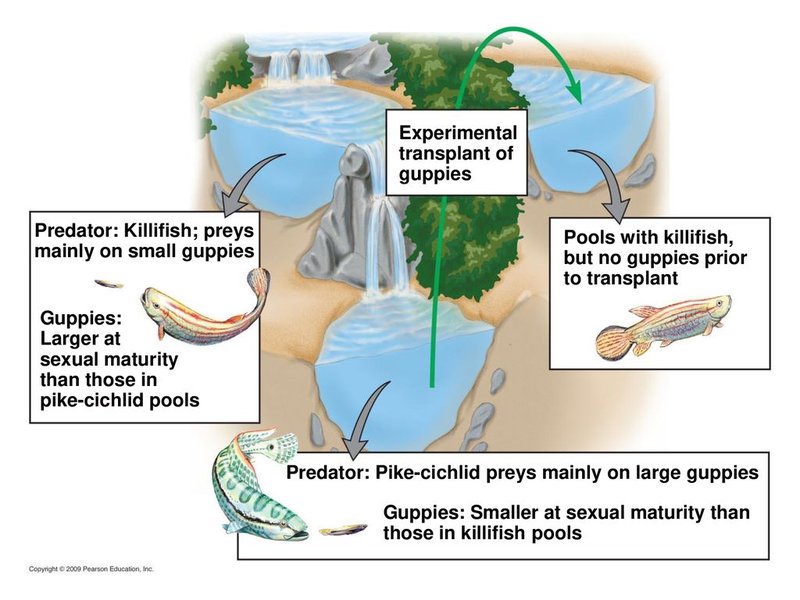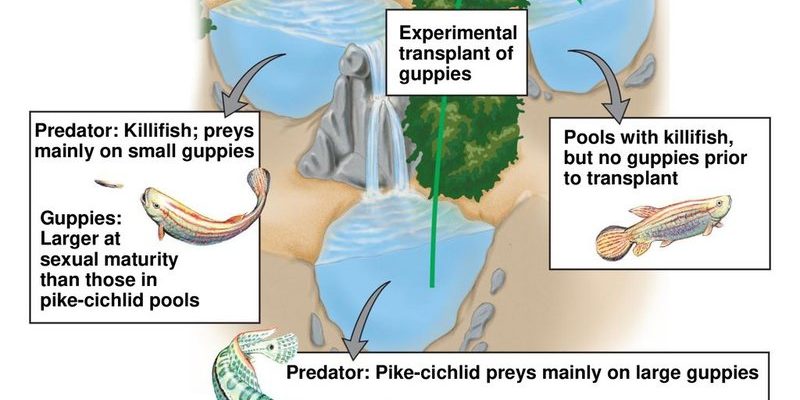
Imagine this scenario: a beautiful aquarium full of guppies, darting to and fro, but look closely. Hidden from view, tapeworms are clinging to their insides, quietly feeding off their hosts. These parasites, though not visible to the naked eye, are affected by the larger world around them—from predators that feast on them to environmental changes that threaten their survival. Understanding this complex relationship helps us appreciate the delicate balance of ecosystems, even in our own backyards.
In this article, we’ll dive deep into the challenges that guppy tapeworm populations face. We’ll explore the various predators that threaten them and the environmental factors that create a struggle for survival. By the end, you should have a clearer picture of how these little tapeworms fit into the bigger aquatic puzzle.
Understanding Guppy Tapeworms
First things first, let’s get to know our subject: the guppy tapeworm. These parasites belong to a group of flatworms called cestodes. They’re typically found in freshwater environments, where they attach themselves to the intestines of their fishy hosts. Guppy tapeworms are often a silent companion to their guppy hosts, feeding off nutrients while not always showing immediate harmful effects.
But here’s the kicker: while guppy tapeworms might sound scary, many fish can tolerate them to an extent. They often go unnoticed until the host fish is stressed or weakened. Unfortunately, a high tapeworm burden can lead to serious health issues for guppies, such as malnutrition or digestive problems. So, while they might look harmless, they can create significant challenges in the aquatic world.
Now, why should we care about these tiny tapeworms? Well, they play a role in the food web and contribute to the overall health of marine ecosystems. Both predators and environmental factors can impact their populations, and understanding these relationships helps us appreciate the complexities of underwater life.
Predators of Guppy Tapeworms
One of the most immediate threats to guppy tapeworms is their natural predators. A variety of aquatic creatures, from small fish to larger predators, prey on these parasites. Some of the primary predators include:
- Benthos fish: Species like catfish and cichlids actively hunt and consume guppy tapeworms as part of their diet.
- Macroinvertebrates: Tiny creatures like shrimp and snails often eat these parasites when they’re in their larval stage.
- Birds: Waterfowl that feed in freshwater habitats can also play a role, consuming infected fish and, in turn, the tapeworms within.
These predators can significantly affect tapeworm populations. When guppies are abundant, tapeworms thrive; however, a rise in predatory fish can lead to a swift decline in their numbers. It’s a constant cycle of abundance and scarcity that keeps the ecosystem in a delicate balance.
You might be wondering how predation affects the entire aquatic ecosystem. Well, the presence of predators can limit the tapeworm population, which helps maintain the health of guppy populations. Without those pesky tapeworms, guppies can thrive, reproduce, and contribute to the food chain, creating a more vibrant aquatic environment.
Environmental Factors Impacting Guppy Tapeworms
Just like any other organism, guppy tapeworms are heavily influenced by their environment. Changes in water quality, temperature, and habitat can dramatically affect tapeworm populations. Here’s how various environmental threats come into play:
- Water Pollution: Chemicals from agricultural runoff or waste disposal can drastically lower water quality, affecting the life cycles of both guppies and tapeworms.
- Climate Change: Rising temperatures and altered weather patterns can lead to changes in freshwater habitats, making them less hospitable for tapeworms to thrive.
- Habitat Destruction: Urban development and deforestation can lead to the loss of aquatic habitats, decreasing the chances of both guppies and their tapeworms to survive.
Let’s break that down a bit. For instance, if pollution seeps into water bodies, it can reduce the oxygen levels necessary for the survival of both guppies and their parasites. This creates an environment where tapeworms struggle to find hosts, leading to lower reproduction rates and, eventually, a decline in their population.
Climate change, on the flip side, can also alter the suitability of habitats. As temperatures rise, some areas may become too warm for tapeworms, forcing them to adapt or face extinction. It’s a tough world out there, and these environmental factors play a pivotal role in the future of guppy tapeworms.
The Impact of Overfishing
Overfishing might seem like a distant concern when talking about parasites like guppy tapeworms, but it has far-reaching effects on the aquatic food web, including these little guys. When fish populations decline, especially those that normally consume tapeworms, it can lead to a sudden increase in tapeworm numbers.
Think of it this way: if you take away the natural predators, it’s like opening the floodgates for the tapeworms to multiply unchecked. Without those fish to keep their numbers in check, you might see tapeworm populations balloon. This overabundance can then harm the hosts, leading to a series of health issues for guppies.
Moreover, overfishing can disrupt the balance of the ecosystem, leading to changes in water quality and habitat loss. This, in turn, affects not just the predators, but the entire aquatic community, which includes guppy tapeworms. It’s a ripple effect that can create a somewhat chaotic environment for all species involved.
How Tapeworms Adapt to Their Environment
Despite all these threats, guppy tapeworms have some survival tricks up their sleeves. Like many parasites, they can show remarkable resilience and adaptability. For instance, they can enter a dormant stage when conditions become unfavorable, essentially hitting the pause button on their life cycle.
When the environment improves—for instance, if water quality is restored or predatory populations decrease—they can spring back into action. This ability to adapt helps them survive in changing environments where not all tapeworms are so lucky.
Additionally, guppy tapeworms can sometimes change their reproduction rates based on the abundance of their hosts. If guppy populations are healthy and plentiful, tapeworms will reproduce more actively, ensuring their continuation. This means their populations can fluctuate based on the availability of hosts and environmental factors.
The resilience of guppy tapeworms showcases the intricate dance of nature. It’s all about balance, and understanding these dynamics can help us appreciate the roles of both predators and environmental factors in the aquatic ecosystem.
Conservation Efforts and Solutions
To address some of the threats facing guppy tapeworms and their ecosystems, conservation efforts are essential. Protecting water quality, preserving habitats, and regulating fishing practices can go a long way in maintaining balanced ecosystems.
Here are some key practices that can help:
- Pollution Control: Implementing stricter regulations on industrial waste and agricultural runoff can improve water quality for all aquatic life.
- Habitat Restoration: Restoring natural habitats, such as wetlands and rivers, helps create better environments for guppies and their tapeworms.
- Sustainable Fishing Practices: Promoting catch-and-release fishing techniques and regulating fish populations help ensure that predators remain present to keep tapeworm numbers in check.
Engaging communities in these efforts is crucial as well. Education about the importance of maintaining healthy ecosystems can inspire people to take action. By protecting these ecosystems, we can ensure that both guppies and their tapeworms continue to coexist, making for a more vibrant underwater world.
So, what have we learned about guppy tapeworms and their challenges? These little parasites may not be the stars of the show, but they play an important role in the aquatic ecosystem. Predators and environmental threats constantly shape their populations, highlighting the interconnectedness of life beneath the water’s surface.
By understanding the dynamics at play, we can appreciate the balance that exists in nature. It’s a delicate dance of survival, where every creature, big or small, has a part to play. With proper conservation efforts and awareness, we can help maintain healthy ecosystems that support both guppies and their tiny tapeworm friends. After all, every creature, regardless of size, contributes to the beauty and complexity of our world.

